#kemetic polytheism
Text
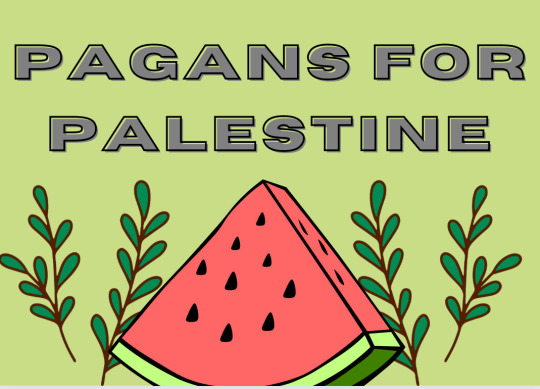
Solidarity between all religions, especially between those threatened by colonialism! Pagans, polytheists, and witches of all creeds unite for Palestine!
Share:
Prayers
Offerings
Protest posters
Spells
News
Donations
And other symbols of solidarity colored by your faith!
Never before in history had we the tools for everyone, all over the world, to resist genocide simultaneously and with such fierceness. Everything you do to keep eyes on Gaza counts. Every prayer, every action, it all amounts to something grander.
Keep talking about Israel’s genocidal, colonialist ‘war’ against Palestine. Keep praying. The divine are with us.
#mine#pagans for Palestine#paganism#hellenic polytheism#norse polytheism#kemetic polytheism#celtic polytheism#christian witch#jewish witch#wicca#polytheism#witchcraft
349 notes
·
View notes
Text
I'm interested to see how the people here prefer to spend time with the Gods :) I tried to be general, but feel free to add your specific favorite activity if you share !
#helpol#hellenic polytheism#polytheism#roman polytheism#kemetic polytheism#hinduism#paganism#religion#devotional acts#polls#theoi#norse paganism#norse polytheism#praxis#paganblr
187 notes
·
View notes
Text
Paganism poll!
If you call your believes "a pagan religion", please vote down below! I'm making a little research for myself, results of which I will post on this blog.
I've made a similar Greek polytheism post!
To clarify, we're are not choosing just one option here! It is implied that nature worship is within the religion or practice regardless. It is the question of mindset of what you put first in your day-to-day worship, what do your festivals/holidays revolve around and such.
If you answer on the poll, please comment/tag your answer and the religion you follow/attribute yourself to!
Although it is not necessarily required for the research I'm doing, that will allow me to do more specific attributions of what religions do people call pagan and what's their actual central part of worship!
Huge thanks to anyone who votes!
Please reblog for a bigger sample size!
#hellenic polytheism#hellenic paganism#norse paganism#norse polytheism#slavic paganism#kemetic paganism#kemeticism#kemetic polytheism#roman polytheism#roman pagan#celtic paganism#helpol#hellenic pagan#hellenic polythiest#morsel:orig#morsel:helpol
132 notes
·
View notes
Text

#Naru's eofferings#kemetic#kemetic polytheism#kemetic paganism#kemetism#Ptah#egyptian mythology#egyptian gods#netjeru#Dua Ptah
88 notes
·
View notes
Text
Hymn to Sekhmet
by Joey Rivers (ascendingaeons)

O Sekhmet, Great Eye of Ra, the First and the Last
Healer and Destroyer, Mother and Daughter
You Who accepted the Command of Ra, Your Father
To cleanse the Two Lands of Isfet
But Your nature was too mighty, Great of Strength as You Are
Wanton and unrestrained, You ravaged Earth as a purifying flame
And as Ra looked on and saw His Eye, He was stricken with pause
By the Will of the Sun, Your Rage was quieted by a crimson brew
And into transformative slumber You fell, Great Goddess
And from Your great Rage, Het-Heru rose
A new Eye was christened, of eros sublime
And you, Great Mother, knew the sadness of regret
You, Great Goddess, know the measure of rage unbound
And so You Stand, Great Mother of War, in defense and duty
Of the Principles and Consequences of Ma’at
Your Children are many, Great Lady of Life
Diverse in their multitudes, empowered by their tribulation
Yours is the soldier, Your Mighty Sekhem made flesh and bone
Entrenched in a maelstrom of fire and blood
Returning home to a nation that does not understand him
Yours is the survivor, a living branch of Your burning Will triumphant
Endeavoring to rise above the quagmire of loss and agony
Through You their struggle is transmuted into the golden light of ka ascendant
Yours is the mother, she who knows sacrifice and sleepless nights
A font unyielding of love and pride, of smiles and laughter perfected
They who bear the weight of the world so a child can know childhood
Yours is the healer, an alchemist of the ontological persuasion
He who is humbled by the frailty beholden to human experience
He who ushers Your Sekhem through the riptide of transformative loss
Yours is the artist, through whose passions course Your Divine Fire
Who walks the scales of inspiration and madness, knowing Creation unfiltered
An alchemist versed in the milieus of perception
For You, Great Goddess, are the very Force of Change
You are that which makes men tremble so
Such an unnecessary fear, of wisdom and experience untouched
Were I You, I would feel such sadness
But how You smile, Great One! How You laugh! How You fight!
You are not “she who cowers before Apep!” NO!
You are the Great Lioness Who rends Chaos asunder!
You fight and rage and bite and tear
Passion and emotion alive and unrestrained!
You are Love, Great Goddess
You are Fear, Great Goddess
You are Devotion, Great Goddess
You are Loss, Great Goddess
You are Health, Great Goddess
You are Sickness, Great Goddess
This is why I call You the Mother of Life
Your Ka is the very essence of experience!
Your Sekhem is the very wind of change!
When I first called upon You, timid and unsure,
I beheld Your Gaze, a window of fire open before my face
And as quickly as You Saw me, You left
And again when I called to You with offering of water and bread
Exhausted by grief and devotion, tirelessly sung from a caregiver’s heart
You came to me and my eyes were opened to You!
As I lay without sleep, You stood at my bedside
Stroking my back with strong hands of fire
Whispering strength and courage into my ear
As a sentinel You walked with me, a Mother Lioness guarding Her cub
Such loyalty and tenderness You showed
And my eyes were forever opened to Your nature
You are the very Force of Creation, the Monad of Being
From which stems those primordial principalities
Love and Fear, Physis and Logos, Known and Unknown
Order and Disorder, Life and Death, Dynamism and Stasis
I offer henu to You, Great Goddess of Creation
The endless potentiality and movement of the living cosmos
The Fires Divine that Become living sinews and living earth
I offer henu to Your Husband Ptah, the Cosmic Smith
Patron of artisans, of those who tirelessly toil
In the pursuit of Bringing Into Being but a shard of the Sacred Unmanifest
I offer henu to Your Son, the Beautiful Nefertem
The Ageless Lotus that rose from the Benben Stone
The First Splendid Light to Shine in the churning Waters of Nun
It was You Who held my right hand as I accepted the mark of a healer
And embraced me as a Mother would Her graduating son
I offer You my pain, Great Goddess
So that You may transmute it into Strength
I offer You my fear, Great Goddess
So that You may transmute it into Courage
I offer You my uncertainty, Great Goddess
So that You may transmute it into Wisdom
Into Your Belly I give of myself to unleash my greatest potential
To burst from Your Bosom, shining and emboldened
For there is nothing that is beyond Your Reach, Great Mother
It is for me, now, to See that nothing is beyond my own
Dua Sekhmet!
Dua Sekhmet!
Dua Sekhmet!
#sekhmet#ptah#nefertem#apep#kemetic#kemetism#kemeticism#netjeru#egyptian gods#spiritual alchemy#deity work#deity worship#polytheist#egyptian polytheism#goddess#goddess worship#sa sekhem sahu#kemet#ancient kemet#kemetic polytheism#pagan#pagan prayer
74 notes
·
View notes
Text
I had a dream where I met a God with moving tattoos all over his body. The tattoos were of various animals, forever prancing around in circles. An infinite hunt.
I just can't get that image out of my head. It was so breath taking. It's so humbling to 'see' such a thing.
It reminds me how the gods are so much more than what we just perceive them as, y'know?
#paganblr#celtic pagan#paganism#celtic polytheism#pagan#hellenic paganism#norse paganism#kemetic paganism#nordic polytheism#hellenic polytheism#kemetic polytheism#dream
66 notes
·
View notes
Text
Pagan/Heathen/General Polytheist question: How do you feel that war deities, or deities associated with war, battle, and combat, for into modern Polytheist religions?
#heathenry#paganism#polytheism#heathen#pagan#polytheist#hellenic polytheism#brittonic polytheism#gaulish polytheism#roman polytheism#kemetic polytheism
389 notes
·
View notes
Text
Pagan Wedding Flowers (and other plants) Cheat Sheet
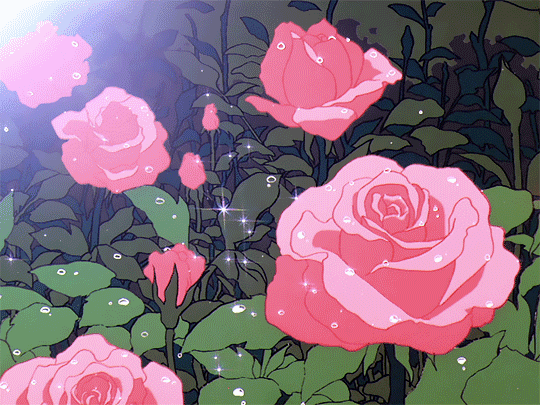
Flowers have been associated with weddings for almost as long as humans have been getting married. In fact, the use of flowers in ritual may actually be older than humans! Neanderthal graves in Iraq suggest that Neanderthals buried their dead with flowers. There are mentions of flowers in our earliest recorded accounts of weddings, such as in Egypt, Greece, and Rome.
Historically, couples would have used whatever flowers were available to them. While some cultures had flowers they preferred for weddings because of their symbolism, couples would have been limited by what grew in their area and by what was in bloom at the time of their ceremony. To be truly as historically accurate as possible, consider using flowers you grew or foraged yourself. Bonus points for native blooms!
For those who aren't into growing or gathering your own wedding flowers, modern florists and greenhouses allow us to choose from a wide range of flowers, many of which aren't native to our homes. This makes it much easier to choose flowers based on their symbolism, history, or cultural meaning.
Historic Wedding Flowers + Plants
Roses have been the flower of choice for Western weddings pretty much forever, and with good reason. The rose is associated with several ancient goddesses of sex, fertility, and/or romance, such as Inanna, Ishtar, Aphrodite, and Venus. (Later, medieval Christians would also associate this flower with the Virgin Mary.) Including the goddess's flowers in a wedding may have been a way of invoking her blessing on the union. Sappho called rose "Queen of the Flowers."
Roses are held in a high regard in pretty much every culture with access to them. They're strongly associated not only with love, but also with beauty, wholeness, blessings, and even spirituality.
Rose was included in wedding celebrations in Ancient Hellos (Greece) and Rome. It is associated with the planet Venus and the water element.
Wheat was also a popular inclusion in weddings in ancient Greece and Rome. Hellenic brides would carry sheaths of wheat or another grain to invoke fertility and good fortune. Wheat was strongly associated with agrarian goddesses like Demeter, Persephone, Ceres, and Proserpina. Carrying wheat may also have been a way of expressing a wish for the marriage to produce many children. Pliny the Elder explicitly says in his Natural History that wheat was included in weddings to honor Ceres.
In modern occult systems, wheat is associated with fertility, the conception of children, and wealth. It is associated with the planet Venus and the element of earth.
Olive branches also featured in Hellenic weddings. Olive was an important crop in the ancient Mediterranean, and olive branches were a symbol of peace and friendship. Olive was also used in the victors' crowns in the Olympic Games. In Athens, the olive tree was a symbol of Athena. It was also carried by worshipers of Apollo when they visited the Oracle at Delphi. Olive was also important to the Romans, who associated it with Mars in his aspect as a protector of peace.
In modern magic traditions, olive is associated with beauty, healing, stamina, wealth, fertility, protection and of course, peace. It is associated with the sun and the fire element.
Orange blossoms were included in Hellenic weddings as a sign of happiness. These strongly scented white flowers also sometimes appeared in Roman weddings. Thousands of years later, Queen Victoria wore a crown of orange blossoms at her wedding, but for her they were a symbol of chastity.
In modern systems, orange is associated with joy, partnership, sweetness, and good luck. It is associated with the sun and the fire element.
Hawthorn appeared in weddings in ancient Rome. Pliny the Elder said that Roman bridal processions included a hawthorn torch dedicated to the goddess Ceres. In Rome, hawthorn was more generally associated with love and good luck.
In Celtic cultures, especially Ireland, hawthorn was believed to be a fairy tree. For this reason, cutting a hawthorn tree or bringing hawthorn branches inside was considered bad luck.
The blooming of hawthorn trees was used to determine the date of Bealtaine, and hawthorn boughs were often decorated with flowers, ribbons, and egg shells to make a May bush, which was placed by the front door for good luck. In Britain, hawthorn wood was used to carve maypoles. Hawthorn flowers may be especially appropriate for a May wedding or handfasting.
In modern occultism, hawthorn is associated with protection, healing (especially healing the heart), romantic love, fertility, granting wishes, and happiness. It is still strongly associated with weddings and marriage. It is associated with the planet Mars and the fire element.
Lotus may have featured in ancient Kemetic (Egyptian) weddings. The lotus was an important symbol in Kemetic religion, and was associated with the sun, rebirth, and the creation of the world. Lotus flowers featured in festivals to honor Hapi, the androgynous god of the Nile. The lotus is used in art to represent Upper Egypt. An Egyptian poem from 1100 BCE connects the lotus to marriage.
Lotus flowers were also popular in ancient Chinese weddings, and they're still used by some Chinese couples today. In Chinese culture, lotus represents purity, honor, and long life.
In modern traditions, lotus is associated with protection, spirituality, and blessings. It is associated with the moon and the water element.
Yellow flowers were used in pre-Christian Ireland for blessings and protection. The exact flower used for these rituals is not specified, so it seems like the color was what mattered. Modern pagans looking to carry on this tradition have lots of yellow flowers to choose from. Some popular choices include yellow roses (see above), yellow amaryllis (associated with creativity, playfulness, and joy), chrysanthemum (associated with long life, optimism, and protection), marigold (associated with happiness, rebirth, and vitality), and/or daffodils (associated with love, fertility, and luck).
Modern Wedding Flowers
We've gone over some of the flowers that were popular in historic pagan weddings, but it's also easy to pagan-ify the flowers that are most popular in modern weddings. Here's a quick rundown of some popular wedding blooms and their neopagan and occult symbolism:
Peony is associated with purification, healing, prosperity, and success. In ancient Rome, peony was believed to be sacred to Mars. It is associated with the sun and the fire element.
Dahlia is associated with mystery, occult wisdom, and transformation. It is associated with the moon and the water element.
Lilac is associated with balance, peace, romance, protection from evil, and attracting friendly spirits. It is associated with Venus and the water element.
Sweet Pea is associated with comfort, charm, and sweetness. It is associated with Venus and the water element.
Hydrangea is associated with healthy boundaries, breaking negative patterns, hex breaking, and protection. It is associated with water and with both the moon and Neptune.
Tulip is associated with beauty, desire, gratitude, love, prosperity, and simplicity. It is associated with Venus and the earth element.
Orchid is associated with beauty, elegance, sexuality, fertility, and romance. It is associated with Venus and the water element.
Lily is associated with spirituality, beauty, harmony, and protection from the evil eye. It is associated with Venus and the water element.
Carnation is associated with beauty, love, rebirth, strength, and healing. Carnations are associated with same-gender love and especially love between men because of Oscar Wilde's fondness for them. They are associated with the sun and the fire element.
Gardenia is associated with love, peace, healing, and spirituality. It is associated with the moon and the water element.
Resources:
"New Neanderthal remains associated with the ‘flower burial’ at Shanidar Cave," Cambridge University Press
"History of Wedding Flowers" by Benna Crawford
The Roman Wedding by Karen K. Hersch
"The Olive in the Ancient Mediterranean" by Mark Cartwright
"The History, Mythology, and Offerings of Hawthorn" by Meghan Pivarnik
Where the Hawthorn Grows by Morgan Daimler
Temple of the Cosmos by Jeremy Naydler
The Magic of Flowers by Tess Whitehurst
The Magic of Trees by Tess Whitehurst (see my disclaimer about Whitehurst's books, but these are some of her better ones)
Cunningham's Encyclopedia of Magical Herbs by Scott Cunningham
#the great handfasting project#handfasting#pagan wedding#wedding magic#queer wedding#pagan#paganism#pagan witch#hellenic polytheism#hellenism#religio romana#cultus deorum#roman polytheism#kemetic paganism#kemetic polytheism#irish paganism#irish pagan#irish folklore#wicca#wiccan#flowers#flower magic#correspondences#love magic#love spell#green witchcraft#green witch#witch#witchblr#witchcraft
502 notes
·
View notes
Text
You can just love.
Today I learned a lesson from Sutekh, that I want to tell everyone, who practice paganism in one who or another. A lesson, that everyone should realise amd remember.
You can just love. You don't need any sign, you don't need to be the chosen one, you can just love. You can love every Deity, every spirit, every forse of nature. You can pick and pray, that how it was in ancient times. What is stopping you from this? Which boundaries? There is none, except one, and that boundaries that we create on our own. You can't imagine, how I drove myself to tears with thoughts that everything should be exactly how in my head. How my throat spasmed, when I saw posts about Loki and His family, how I fast looked away, seeing posts about Zeus, Poseidon and Hephaestus, how my lips pursed, when posts about element connection and Heru the Elder and the Younger and Wesir appears. I kept my feelings locked. "Take time, you will get as good as them with time and learning, it's nothing", – I kept telling myself, while my heart suffered.
There are almost no rules (the one main is respect closed practices, don't be an asshole), except the ones, we created ourselves in our heads. Who told me, that there should be exactly N number of Gods I worship? Who told me, that I should wait a sing? Who the fuck said that all of this is true? There are people and opinions, but there are millions of paths, and it's only for YOU to decide, who to listen and which path take. You don't need to have close relationship, you don't need to "work" with them. You can just love. The whisper of Their name is enough, the thought about Them and your smile is enough. Your simple love is enough. After all, there are no boundaries about worshipping Deities, Spirits, Fairies, Elements, Animals, Nature, Cosmos and Universe except the ones, we, for some reason, create for ourselves.
All this time I kept my love under a lock, just because someone somewhere said or wrote something. All this time I suffered because of this boundaries, that I created myself. Why the fuck I should have them? Why I let someone force me to take another path, that I didn't like?
All this evening there was a big thunderstorm. About an hour there were lightnings, and I felt safe in Sutekh's storm. I started to change, because I wanted, and I asked Him to aid me on this path. But I couldn't do it, if I will continue lie to myself. After all this time, I let myself be honest with my feelings about certain Gods and worship. I wanted to love Them, I wanted to be with Them, even if not as close as with my "main" Gods. It became easier. It became happier. It became right.
I don't think I would be close with Poseidon as close as with Hades, but it doesn't matter. I can just love finding Loki in crunchy leaf, that looked uncruncy, I can just love Wesir and His feeling of home, I can just love Heru, whenever I see a feather.
There are no boundaries (except, again, closed practices), except the ones we created ourselves. You can worship whoever you want without a sing, you can worship a lot of Gods and not feeling guilty, you can not communicating with Them and just believing in Them. You can just love, because love is enough. That is what Sutekh told me, no, remind me. And that is what I am telling you. Just love. Love is enough.
#A piece of my mind :: ⌞☔️🍨🩷⌝#Pagan#Paganism#Hellenic polytheism#HelPol#Kemetic#Kemetic polytheism#Celtic polytheism#Norse polytheism#Eclectic paganism
179 notes
·
View notes
Text
Your deities want you to love and value your self
#apollo deity#apollo devotion#aphrodite deity#aphrodite devotion#hermes devotee#hermes devotion#hellenic polytheism#hellenic deities#deity devotion#hellenic pagan#paganism#norse deities#norse paganism#celtic deities#celtic paganism#hellenic paganism#irish polytheism#irish paganism#kemetic polytheism#kemeticism#self love#self worth#self acceptance#deity work#deity worship
978 notes
·
View notes
Text
The Kemetic Calendar: Months
It's really difficult to talk about and find a decent Egyptian calendar. So difficult that honestly, I've just created my own at this point.
The Egyptian calendar had 365 days, just like the modern western calendar. It consisted of three seasons with 120 days each, with an intercalary month of five epagomenal days to keep up with leap days. Each season was divided into four months of 30 days each.
Below are the seasons, and months.
Akhet (Flood). Roughly September to January in AE, but I celebrate it from January to May.
Month of Djehuty (Jan. 1-30)
Month of Pa'en-Opet (Jan. 31-Mar. 1)
Month of Hat-Hor (Mar. 2-31)
Month of Ka-Hor-Ka (Apr. 1-30)
Peret (Winter). Roughly January to May in AE, but I celebrate it from May to the end of August.
Month of Ta-ib (May 1-30)
Month of Makhir (May 31-Jun. 29)
Month of Pa'en-Amunhotepu (Jun. 30-Jul. 29)
Month of Pa'en-Renenutet (Jul. 30-Aug. 28)
Shemu (Summer). Roughly May to September, but I celebrate it from the end of August to the end of December.
Month of Pa-Khonsu (Aug. 29-Sep. 27)
Month of Pa'en-Inet (Sep. 28-Oct. 27)
Month of Apip (Oct. 28-Nov. 26)
Month of Mosu-Ra (Nov. 27-Dec. 26)
The Epagomenal Days. These were five days at the end of each year to help balance out leap days. After these days were done, the new year was celebrated. Each of these days celebrates the birth days of the deities they are named after. For me, they take place from December 27-31, although in Ancient Egypt they most likely would have taken place in late July/early August.
Meswet Wesir
Meswet Heru
Meswet Sutekh
Meswet Aset
Meswet Nebet-Het
#kemet#kemetism#kemetic pagan#kemeticism#kemetic#kemetic paganism#kemetic polytheism#polytheism#polytheist#paganism#pagan#paganblr#pagan community
290 notes
·
View notes
Text
POV you are me making silly little digital altars on Pinterest bc you love and connect with all the Netjeru and want to give as many of them as possible a space in your life and practice BUT A GUY CAN ONLY HAVE SO MUCH TIME AND SPACE FOR ALTARS AND PRAYERS 💔
#theta rambles#pagan#paganblr#kemetic paganism#kemetic pagan#kemeticism#kemetic#kemetism#witchblr#polytheist#kemetic polytheism#polytheism
61 notes
·
View notes
Text
WIP Bast statue!
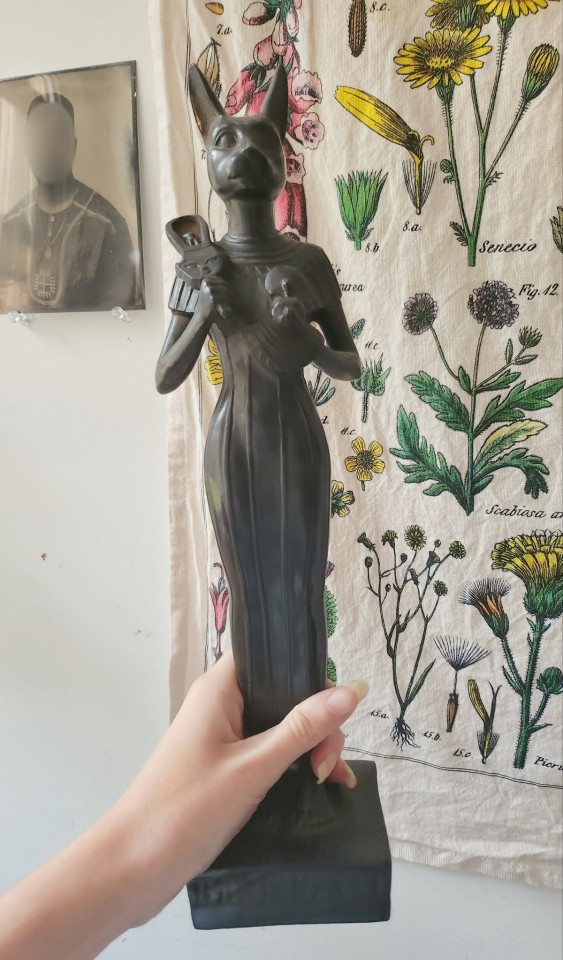
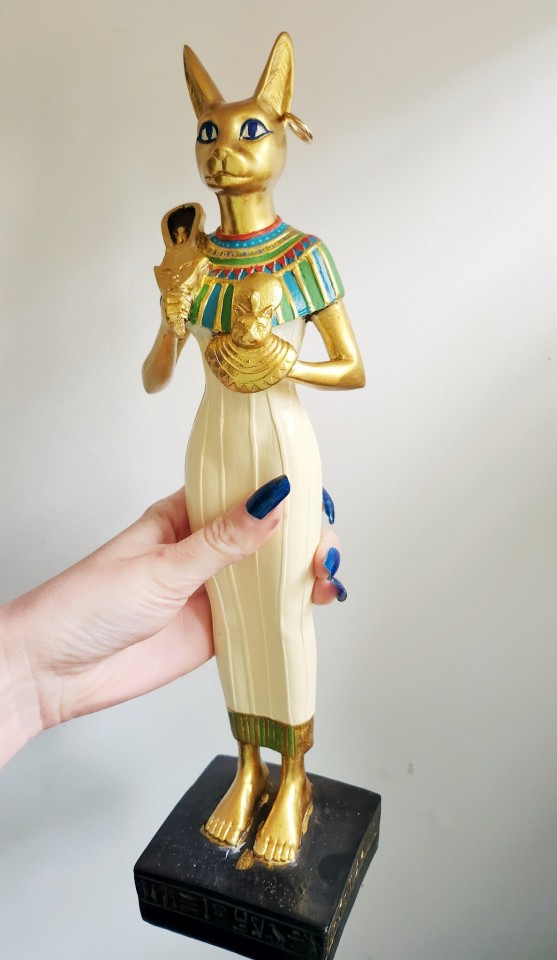
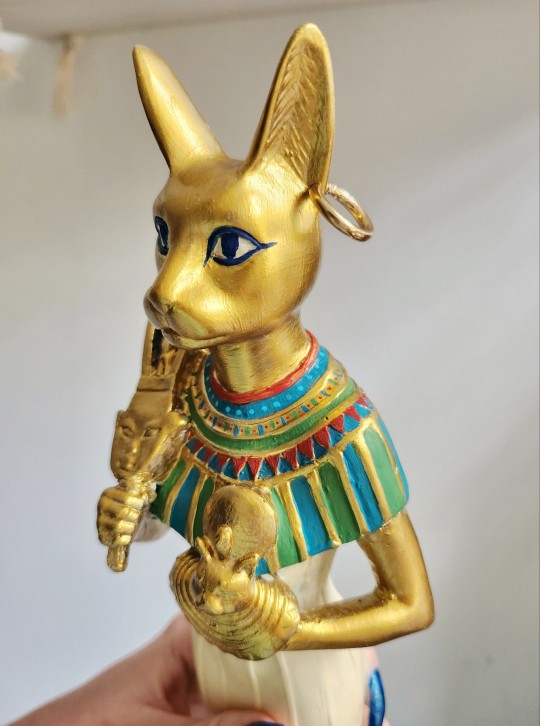
She's in sort of rough shape still but I'm smoothing the rough edges!!
#ignore my dinged up walls my room used to be a playroom for kids lol#polytheism#polytheist#kemetic paganism#kemetic polytheism#paganism#kemeticism#kemetic#bastet#bast#egyptian polytheism#egyptian pantheon#egyptian paganism
128 notes
·
View notes
Text

I finally got some proper statues for my altar! I started with Djehuty and Amun since they're who I'm feeling closest to currently but I hope to add some more over the summer. I'm so glad I was able to find a relatively inexpensive Amun one too since he's a bit harder to find.
33 notes
·
View notes
Text

So we moved at the start of the month, which means it's time to establish a new shrine.
It's bare bones right now, and that's okay. They would rather me work with what I have than perfection. No words spoken beyond the simple incense and flame prayer. None needed. Instead I feel Their love washing over me, a forceful hug from my divine Fathers.
I love Them, and They love me.
#ptah#wepwawet#kemetic#kemetic fandom#kemeticism#kemetic paganism#kemetic polytheism#egyptian paganism#egyptian polytheism#paganblr#pagan#paganism#personal practice#shrines and altars#food#alcohol
99 notes
·
View notes
Text
As someone who has always been fascinated by the sky, stars and planets, I’ve become more accustomed to look up at the sky more. Cloud watching and observing the constellations gives me a sense of peace and awe. Space is so vast and so incredibly expansive. For a pagan like me, especially an animist, the sky is a living soul just like the stars. ✨
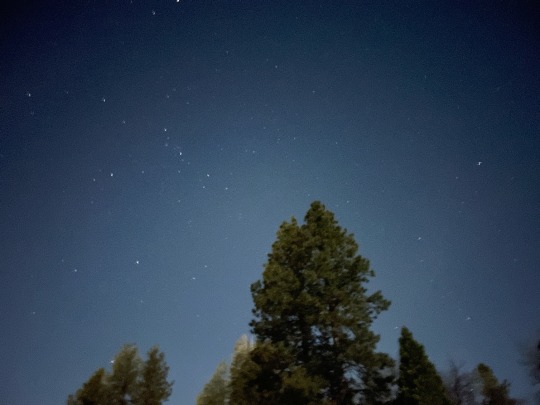
#pagan#paganism#witchblr#witchcraft#deity work#satanism#kemetism#hellenic polytheism#hellenic pagan#kemetic paganism#kemetic polytheism#occultist#occultist witch#egyptian paganism#Greek paganism#astrology#astronomy#animist#animism
29 notes
·
View notes